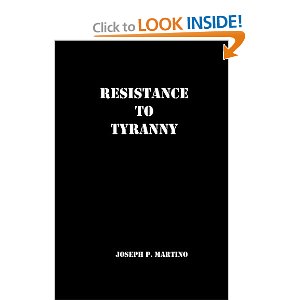
Two contrasting views–one written for the people against an out of control government, the other for a well-intentioned government facing out of control criminal organizations with foreign government support.

This book is a primer on armed resistance to tyranny. It is intended to answer questions the reader might not think of asking, and to direct the reader to sources of more detailed information. Topics covered include justifying revolt, conditions for success, possible government responses, strategy & tactics, the overt and covert organizations, weapons, equipment, survival skills, land navigation, camouflage, boobytraps, weapons caching, training, secure camps, safe houses, communications, encryption & codes, gaining public support, sniping, sabotage, raids, intelligence and counter-intelligence. It is intended for scholarly information purposes only. Dr. Martino is a retired Air Force Colonel. He served in Thailand where he conducted research on counterinsurgency. He later was Chairman of the Counterinsurgency Working Group of the Military Operations Research Society. He teaches a course in Just War Doctrine at Yorktown University. He holds degrees in Physics, Electrical Engineering and Mathematics.

With kidnappings on the rise in Phoenix and many overseas locations, U.S. police and military should both be interested. The real threat is to the borders, highways, and cities of America–with the enemy being organized crime and its foreign manipulators. This book first looks into which Hispanic and Asian elements have been controlling the wholesale distribution of drugs. Then, it provides pictorial instruction on drug route mapping, hostage rescue, and collateral-damage-free security. Part One discusses the possibility of a foreign power's subversion of America. While the most flagrant evidence of such has been cyber, it may well include a crime wave. Such things are always possible in 4th-Generation Warfare (4GW)–that which is fought in the political, economic, psychological, and martial arenas simultaneously. If such an attack were in progress, U.S. leaders might not commit enough of their Armed Forces to meet what appeared to be a law enforcement challenge. Part Two discusses the extent to which U.S. military and police missions have merged. Then, Part Three offers advanced methods for smuggling-route identification, civilian-saving building assault, and neighbor-sparing outpost defense. Those methods should help U.S. police to handle drug-pushing gangs, and U.S. troops to defeat drug-funded Taliban.



